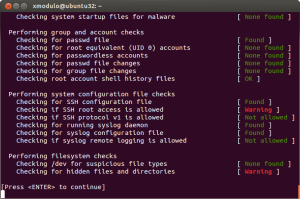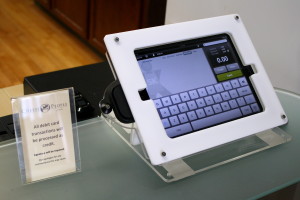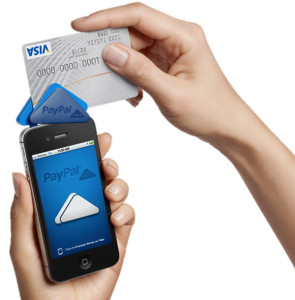August 27th, 2014 by Elma Jane
Backoff malware that has attacked point of sale systems at hundreds of businesses may accelerate adoption of EMV chip and PIN cards and two-factor authentication as merchants look for ways to soften the next attack. Chip and PIN are a big thing, because it greatly diminishes the value of the information that can be trapped by this malware, said Trustwave, a security company that estimates about 600 businesses have been victims of the new malware. The malware uses infected websites to infiltrate the computing devices that host point of sale systems or are used to make payments, such as PCs, tablets and smartphones. Merchants can install software that monitors their payments systems for intrusions, but the thing is you can’t just have anti-virus programs and think you are safe. Credit card data is particularly vulnerable because the malware can steal data directly from the magnetic stripe or keystrokes used to make card payments.
The point of sale system is low-hanging fruit because a lot of businesses don’t own their own POS system. They rent them, or a small business may hire a third party to implement their own point of sale system. The Payment Card Industry Security Standards Council issued new guidance this month to address security for outsourced digital payments. EMV-chip cards, which are designed to deter counterfeiting, would gut the value of any stolen data. With this magnetic stripe data, the crooks can clone the card and sell it on the black market. With chip and PIN, the data changes for each transaction, so each transaction is unique. Even if the malware grabs the data, there not a lot the crooks can do with it. The EMV transition in the U.S. has recently accelerated, driven in part by recent highprofile data breaches. Even with that momentum, the U.S. may still take longer than the card networks’ October 2015 deadline to fully shift to chip-card acceptance.
EMV does not by itself mitigate the threat of breaches. Two-factor authentication, or the use of a second channel or computing device to authorize a transaction, will likely share in the boost in investment stemming from data security concerns. The continued compromise of point of sale merchants through a variety of vectors, including malware such as Backoff, will motivate the implementation among merchants of stronger authentication to prevent unauthorized access to card data.
Backoff has garnered a lot of attention, including a warning from the U.S. government, but it’s not the only malware targeting payment card data. It is not the types of threats which are new, but rather the frequency with which they are occurring which has put merchants on their heels. There is also an acute need to educate small merchants on both the threats and respective mitigation techniques.. The heightened alert over data vulnerability should boost the card networks’ plans to replace account numbers with substitute tokens to protect digital payments. Tokens would not necessarily stop crooks from infiltrating point of sale systems, but like EMV technology, they would limit the value of the stolen data. There are two sides to the equation, the issuers and the merchants. To the extent we see both sides adopt tokenization, you will see fewer breaches and they will be less severe because the crooks will be getting a token instead of card data.
Posted in Best Practices for Merchants, Credit Card Security, Payment Card Industry PCI Security, Point of Sale Tagged with: access, account, account numbers, anti-virus programs, authentication, Backoff, card, card networks, chip, credit, Credit card data, credit-card, data, data breaches, devices, digital payments, EMV, magnetic stripe, Malware, Merchant's, Payment Card Industry, payments, PCs, PIN, PIN cards, point of sale, POS, POS system, programs, Security, security standards, Smartphones, software, system, tablets, tokenization, tokens, transaction, Trustwave, websites
November 12th, 2013 by Elma Jane
Since Medical Transcriptions is one of the product and services by National Transaction Corporation under National Transcription Corporation I just want to share this topic.
The abuse of the medical credit card system is growing by the day because many doctors are making these cards appear like an in-house payment program. Most patients are inclined to pay their doctor for their services directly, but they are more hesitant when a credit card is involved. Some medical professionals are masking the true source of their lending services and thus putting their clients at risk.
An example of this form of abuse can be seen by a company called CareCredit. Nearly 90% of New Yorkers in the CareCredit program opted for a program with no interest if the amount was paid in full. A quarter of them ended up paying 26.99% interest on their accounts instead. CareCredit has more than seven million cardholders nationwide, and it is currently the defendant in a variety of civil lawsuits.
If you are offered a chance to take to a credit card to cover your medical expenses, you should fully research the card before signing on the dotted line. Fully understand the terms of the card before agreeing to anything so you don’t end up in heavy debt.
Medical credit cards are designed to help people pay for procedures they may not be able to afford on their own. These cards give patients a chance to undergo the procedures their insurance may not pay for, as well as giving the doctor the opportunity to get their money right away.
While this may seem like a great setup, most patients are pressured into getting medical credit cards without knowing the excessive costs sometimes associated with them. They can fall into a debt trap very quickly.
Posted in Credit card Processing, Electronic Payments, Medical Healthcare Tagged with: amount, cards, clients, credit-card, debt, doctors, heavy debt, interest, lending, medical transcriptions, money, paid, patients, payment, procedures, professionals, risk, services, signing, system, terms
October 18th, 2013 by Elma Jane
Cash registers were the only game in town not too long ago, but these days companies have many more choices. Replacing antiquated cash registers with modern POS (point of sale devices carries a number of important benefits, including:
1. Can cut down on user errors. Hitting a wrong key is always a risk when ringing a sale, but point of sale devices have built in checks to ensure that the information is entered accurately.
2. Customers receive more informative itemized receipts with a point of sale devices. Many cash registers can only print the date and the amount of the sale, but since point of sale devices are tied into the inventory control system they can provide much more detailed information, including a description of the item, the list price and the sale price.
3. Easy to look up past transactions. If you need to know how much you sold last Tuesday a point of sale system can give you that information in a snap. It would take many hours of laborious work to find the same answer using a cash register.
4. Maintenance and repair costs are often much lower on a point of sale device than a cash register. The number of companies that repair cash registers is dwindling, and that means that repair costs can be rather high. There are many vendors who repair point of sale devices, and that can keep repair costs low.
5. Provide faster service than old fashioned cash registers. Every part of the process, from authorizing a credit card transaction to printing a customer receipt, is faster on a point of sale device.
6. Simplify the accounting process. Old fashioned cash registers force accountants to sort through hundreds of receipts, but with a point of sale system financial personnel can simply use the built in reports or create their own.
7. Unlike a cash register, a point of sale system often includes an overall inventory management system. Store owners can use a point of sale system to track their biggest sellers and reorder those products when stock gets low.
8. Workers now a days are often more comfortable with point of sale devices than old fashioned cash registers. Generation now entering the workforce never knew a time without computers, and as a result they are very comfortable working with computerized technology like point of sale devices.
9. You can use a point of sale system to create your own purchase orders, eliminating an extra step in the ordering process. You can even automate the ordering process to make sure you never run out of your hottest selling products.
10. You can see real time inventory with a point of sale device, something that even the best cash registers simply cannot do. In fact, many companies have found that implementing a point of sale system virtually eliminates the need for a costly hand count.
There are many reasons why your company should consider state of the art point of sale device and ditching the old fashioned cash register. These devices can lower the cost of doing business while increasing productivity, and that can be good for the bottom line.
Ready to make the switch from a cash register to a point of sale system? National Transaction can provide the software, hardware and support for any POS need. NTC integrate your payment processing into many accounting software titles such as Intuit Quickbooks or Peachtree Accounting. NTC can also provide integation for any restaurant cash register system and all industry specific solutions. NTC provide credit card readers for Android, Apple and Blackberry smartphones and tablet devices. National Transaction can make the World your Point Of Sale.
Posted in Credit card Processing, Mobile Point of Sale, Point of Sale, Visa MasterCard American Express Tagged with: accounting, amount, Android, Apple, authorizing, benefits, blackberry, cash register, computerized, control, costs, credit-card, date, devices, hardware, inventory, itemized, low, maintenance, point of sale, POS, price, print, process, readers, receipts, reorder, repair, sale, sale price, Smartphones, software, stock, system, transactions, vendors, virtually
October 1st, 2013 by Elma Jane
PayPal announces updated app, device for hands-free, in store payment.
A busy few days at PayPal. Late last week, the global payments giant announced a major update to its app for Android and iOS. The new features have a strong mobile payments bent. And now, the company has announced the planned roll-out of “Beacon,” which uses Bluetooth Low Energy Technology to let customers check into retail stores and pay by verbal consent.
Paypal’s President calls the solution PayPal’s “most significant contribution to date in reinventing the in-store shopping experience.”
Beacon is a new add-on technology that merchants plug into an A/C outlet. When a PayPal customer walks into a participating store and agrees to check-in, Beacon triggers a quick vibration or sound to confirm a check-in; customer’s photo then appears on a point-of-sale screen. To pay, the customer simply gives a verbal confirmation. “No wallet and no card. Nothing to do. Not even touching your phone.
BLE was chosen to resolve some problems posed by traditional geo-location, including power consumption. It will look for any store running a PayPal compatible POS system, and will only transmit information to PayPal or to the merchant if the customer agrees to check in.
The solution aims to improve on the credit-card-swiping experience. PayPal figured the only better way to pay would be to do nothing.
The company will be piloting Beacon in the fourth quarter.
New App
PayPal’s vastly redesigned app for creating a more seamless in-store shopping experience is getting a lot of kudos across the web.
A New tab called “Shop” the first thing that appears when the app is opened, it displays nearby stores or restaurants that accept PayPal payments. Users can check in and open a tab, then select various payment methods from the check-in screen. Upon payment, the app generates a confirmation alert and sends an email receipt.
You’ve really got access to your entire wallet in the app.
The app also lets you order food ahead of your arrival bypassing the line. The feature works through PayPal’s partnership with Eat24 . Dinners can pay at the table, and at some locations, order more drinks.
For the first time, the app includes a Bill Me Later tab that lets users apply to finance PayPal purchases, and it integrates coupons and offers.
The company wanted the new app to help solve problem, and that payment isn’t something they typically complain about. So they focused on other potentially problematic experiences in the retail environment, waiting in line, waiting to pay the bill at their table and keeping track of coupons.
Posted in Credit Card Reader Terminal, Credit Card Security, Digital Wallet Privacy, Electronic Payments, Mobile Payments, Near Field Communication, Point of Sale, Smartphone Tagged with: Android, app, Apple, card, credit-card-swiping, geo-location, iOS, payment, PayPal, POS, retail, system, wallet



